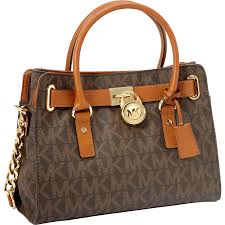 After years of growing sales, the U.S. market has been flooded with handbags in the $200 to $400 price range. The demand for these bags has finally cooled off. Sales of handbags and totes in the United States rose only 1 percent for the 12 months ending in April 2015. Sales totaled $7.9 billion.
After years of growing sales, the U.S. market has been flooded with handbags in the $200 to $400 price range. The demand for these bags has finally cooled off. Sales of handbags and totes in the United States rose only 1 percent for the 12 months ending in April 2015. Sales totaled $7.9 billion.
Michael Kors reported a 5.8 percent decrease in first quarter same-store sales. That was the first decline in sales since the company went public in December 2011. Revenue rose only 17.8 percent in the fourth quarter of 2014. In the previous 13 quarters, it had grown by 29.9 to 74.4 percent.
Analysts had expected same-store sales to rise 4.4 percent in North America, but they were down 6.7 percent. This was due to less tourist traffic in the Northeast and Southeast United States, weak sales of watches, and shipping delays caused by disruptions at ports on the West Coast.
Michael Kors has been expanding, opening new stores, and increasing distribution to department stores. This has contributed to brand fatigue. The handbag category is growing at a slower rate than it has for the past five to six years.
Margins have been declining as Michael Kors offers discounts. The company’s revenue and share forecast are both lower than what analysts were expecting. It does not expect same-store sales to rise in fiscal 2016. Shares of Michael Kors stock are falling.
Coach and Kate Spade also reported slower sales growth in the first quarter. Sales for Kate Spade grow 9 percent in the first quarter, compared to 22 percent in the first quarter last year. The reason for the decline is unclear. According to managers at Michael Kors and Coach, sales of handbags industry-wide in North America have slowed to the low single digits and are not expected to increase in the near future.
The glut of handbags has been good for consumers. Retailers are offering handbags by top designers at significant discounts. Michael Kors has been offering sales, but other brands, such as Coach and Kate Spade, are now offering fewer discounts.

Leave a Reply